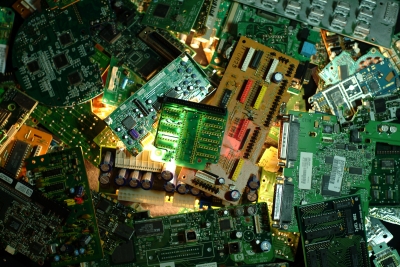For the first time, data about materials arising in WEEE (e-waste), end-of-life vehicles, batteries and mining wastes are being collated in one place. Future users of the data discussed how the data could be of use to them. End-users included product manufacturers, recyclers, researchers, NGOs and policy makers. A key talking point of the day was that component manufacturers are largely missing in the debate on secondary raw materials use and recycling.
Pascal Leroy, Secretary General at the WEEE Forum, said “The lack of reliable harmonised data has long been a barrier to quantifying the potential availability of recycled raw materials. This project is a significant step forward in improving understanding. For e-waste alone we have already improved the picture for stocks and flows of end of life products.”
At the IN annual event on the 18th October, the ProSUM consortium shared with over 70 stakeholders the achievements of the project so far e.g. the development of a new, harmonised data classification system and early insights into the data collation so far. Stakeholders shared their views on their data and intelligence needs and a range of options were discussed for how data should be presented and what future additional services and work is needed. Sarah Downes, ProSUM Project Leader, said “I am delighted with the interest we are getting in the project and we now have over 200 members in our Information Network. The project will only be a success if our stakeholders, or end-users, have data and intelligence which is meaningful to them. At the end of the day, these are the people who will drive recycling forward.”
Stakeholders noted that there is a lack of participation in the Information Network from the automotive sector and component manufacturers, yet they are key decision makers and intelligence holders on what materials are used in parts. These organisations are being encouraged to join the Information Network.
Data on primary and secondary raw materials, in particular critical raw material (CRM) content, are available to varying extents in Europe. Until now though it has been difficult to access and compare this data because it is presented and aggregated in different ways and scattered amongst a number of government agencies, universities, NGOs and industry. The ProSUM (Prospecting Secondary raw materials in the Urban mine and Mining Wastes) project addresses this issue by setting up an Information Network of experts and stakeholders and developing the EU Urban Mine Knowledge Data Platform (EU-UMKDP) to access all available, harmonised data.
The project is focussed on products and wastes containing CRM, critical to today’s high tech society. This includes electrical and electronic equipment, vehicles, batteries and mining wastes. The Information Network seeks to co-ordinate effort to collect harmonised secondary CRM data to improve the knowledge base across stakeholder groups in the EU. The project will construct a comprehensive inventory mapping CRM stocks and flows at national levels across Europe. This will be accessed by a user-friendly portal with data filtering capability, advanced search capabilities, statistics computation, automated report generation and map visualisations. It will also be possible link data with primary raw materials data from the Minerals4EU project http://minerals4eu.brgm-rec.fr/. To maintain and expand the data in the future, protocols, standards and recommendations will be made for both the EU-UMKDP and concerning improvements in the knowledge base for secondary raw materials.
Ultimately, ProSUM aims to provide better information for policy makers to shape the transition to a circular economy, for academia to define research priorities and for industry to source and recycle more secondary raw materials. Through the Information Network it also aims to bring together a wide range of actors in the value chain to improve the knowledge base and interdisciplinary collaboration.











